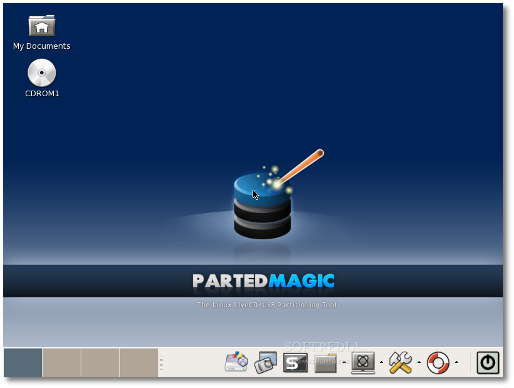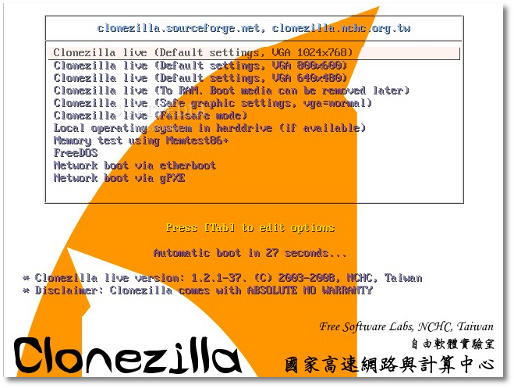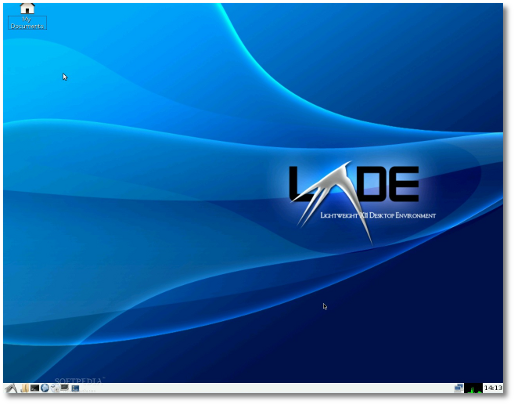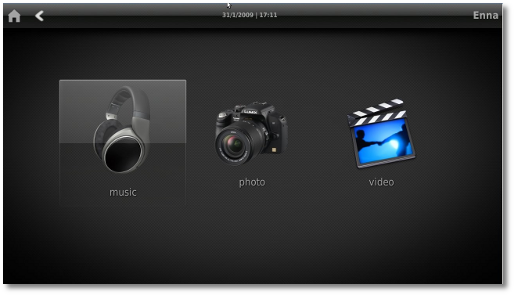Welcome to the 31st issue of Softpedia Linux Weekly!
Starting this week, we will publish an editorial about some of the latest and controversial subjects in the Linux world. In other news: Patrick Verner announced version 3.5 of his Parted Magic Linux distribution, which has now the ability to partition hard drives with the newly-released EXT4 file system. Then Steven Shiau announced his Clonezilla Live CD 1.2.1-37, which improves the support for cloning Microsoft Windows OSes. The KDE community announced the highly-expected KDE 4.2 desktop environment and Klaus Knopper presented the latest version of the popular Knoppix Live CD. On Thursday, AMD announced ATI Catalyst 9.1 display drive for the Linux community, with stable support for Ubuntu 8.10, full OpenGL 3.0 support, Hybrid CrossFire and Multiview support. Ubuntu 8.10 users need to update their machines to the new version of the Linux kernel released by Canonical at the end of the week, which fixes six important vulnerabilities. Last but not least, the GeeXboX team introduced version 1.2 of their minimalist multimedia home theater distribution. The weekly ends with the video clip of the week, the latest Linux distributions released/updated last week and the development releases.
Summary:
 Editorial: Linus Torvalds Switches to GNOME - by Daniel Pop-Silaghi
Editorial: Linus Torvalds Switches to GNOME - by Daniel Pop-Silaghi
I know it's not breaking news anymore, but GNOME fans all over the world have a new weapon in the raging war against the KDE camp: Linus Torvalds, the creator of Linux himself. Why? Because he recently switched to GNOME as his default desktop manager.
Looking for some shelter from the cold January in Portland, Torvalds attended the linux.conf.au held in, you guessed it, sunny Australia. During his stay, he was interviewed by Computerworld.au. Asked about his opinion on KDE 4.0, he expressed his disappointment with it, especially with how the KDE team proceeded in developing their desktop manager, making him choose the obvious alternative, the "humble" GNOME. And I don't mean humble as a bad thing, not at all. It probably looks dated (a minor defect that can easily be fixed with one of those modern themes), but in terms of speed, stability and productivity, GNOME is the way to go if you want more than just eye-candy.
Not that I want to compare myself to Linus Torvalds, but like him, the 4.0 bugfest and useless features made me turn my back on KDE until a more well-thought (or just thought) version would emerge. On second thought, looking at the newly-released KDE 4.2, the day to switch back to it may be closer than I estimated. But I don't want to get too excited about it 'till I gather some more experience with this new version.
KDE is more of an egocentric desktop manager that wants to be in the spotlight, while GNOME will sit quietly in its place and let you do your stuff. On the other hand, GNOME wasn't all "sunshine and roses" since its debut. It is well known that, until a couple of years ago, crashes were definitely not a rare apparition, and too much fiddling with it would have led one to a non-working desktop. But all that is old news now; with a well-matured 2.24 GNOME lacking major show-stoppers, and peeking at the upcoming 2.26 release, my life with Linux is almost hassle-free.
I don't want to start yet another war so I won't ask you to defend your desktop manager of choice, because in the end we all have different views and needs, and honestly... it would be really boring if there was only one choice for the desktop environment (*cough* Windows *cough*). Instead I am curious to know your opinions regarding Linus' choice to switch to GNOME and leave KDE in a dark sad corner of his office.
 On January 25th, Patrick Verner announced the fifth maintenance release of Parted Magic 3, a Slackware-based Linux distribution designed to help users with partitioning tasks. Parted Magic 3.5 includes various new features and lots of updated packages. It is now powered by Linux kernel 2.6.28.2, which means that Parted Magic 3.5 is the first version to offer stable EXT4 support. Among other changes we can notice better support for wireless devices and some new programs, such as: GSmartControl 0.8.3. Xfce4 Screenshooter 1.5.0, FSArchiver 0.3.5 and SquashFS 3.4. This said, we can definitely say that Parted Magic 3.5 is a bleeding-edge Linux distribution!
On January 25th, Patrick Verner announced the fifth maintenance release of Parted Magic 3, a Slackware-based Linux distribution designed to help users with partitioning tasks. Parted Magic 3.5 includes various new features and lots of updated packages. It is now powered by Linux kernel 2.6.28.2, which means that Parted Magic 3.5 is the first version to offer stable EXT4 support. Among other changes we can notice better support for wireless devices and some new programs, such as: GSmartControl 0.8.3. Xfce4 Screenshooter 1.5.0, FSArchiver 0.3.5 and SquashFS 3.4. This said, we can definitely say that Parted Magic 3.5 is a bleeding-edge Linux distribution!
Download Parted Magic 3.5 right now from Softpedia.
 On January 27th, Steven Shiau announced the availability of Clonezilla LiveCD 1.2.1-37, a Linux-based minimal operating system that can help you clone systems. The new version of Clonezilla is now powered by Linux kernel 2.6.26-13, based on Debian Lenny repository (01/26/2009). Two new languages were added and the Microsoft Windows cloning implementation was greatly improved. However, a couple of days later he released version 1.2.1-39, which fixes two important bugs. The following are some of the features brought by Clonezilla LiveCD 1.2.1-37:
On January 27th, Steven Shiau announced the availability of Clonezilla LiveCD 1.2.1-37, a Linux-based minimal operating system that can help you clone systems. The new version of Clonezilla is now powered by Linux kernel 2.6.26-13, based on Debian Lenny repository (01/26/2009). Two new languages were added and the Microsoft Windows cloning implementation was greatly improved. However, a couple of days later he released version 1.2.1-39, which fixes two important bugs. The following are some of the features brought by Clonezilla LiveCD 1.2.1-37:
· Updated Linux kernel to version 2.6.26-13; · Now based on Debian Lenny repository (01/26/2009); · Added Italian language; · Added Spanish language; · Updated French translation; · Updated Chinese translation; · Updated Japanese translation; · Added the -j2 and -j3 options in ocs-sr and drbl-ocs, for restoring/saving hidden data; · Added the -j2 option in ocs-onthefly, for cloning hidden data; · Added the -z2p option for Parallel BZIP2; · Added the -e1|--change-geometry option to drbl-ocs and ocs-sr; · Added for restore/save functions for hidden data between MBR and the first partition, in ocs-onthefly and ocs-sr; · Added -e1 auto option in order to use the ntfsreloc tool to fix CHS based on the value of EDD; · Added the get_RawCHS_of_HD_from_sfdisk function, which can be used as a backup plan for partclone.ntfsreloc.
Download Clonezilla LiveCD 1.2.1-39 right now from Softpedia.
 Also on January 27th, the KDE Project announced the immediate availability of the final version of KDE 4.2 a.k.a. "The Answer." The KDE 4 desktop environment ships with many packages, including web development applications, educational tools, administrative programs and more, all of which are available in over 50 languages.
Also on January 27th, the KDE Project announced the immediate availability of the final version of KDE 4.2 a.k.a. "The Answer." The KDE 4 desktop environment ships with many packages, including web development applications, educational tools, administrative programs and more, all of which are available in over 50 languages.
Highlights of KDE 4.2.0:
· New and improved applets · New system and application notifications · Efficient and smooth window management · New breathtaking desktop effects · Easier configuration · Tasks can be grouped · File manager-like desktop powered by Plasma · New and improved tools · Smart creation and extraction of archives · New and improved printer manager
Download KDE 4.2.0 right now from Softpedia.
 Looks like January 27th was an important day in the Linux community, as Klaus Knopper proudly announced the sixth release of his popular KNOPPIX Live CD Linux distribution. KNOPPIX 6.0 was completely rebuilt from scratch, it is now based on Debian Lenny, and it's powered by the lightweight LXDE desktop environment. Among various applications included in KNOPPIX 6.0 we can notice the newly-released OpenOffice.org 3.0.1 open source office suite and the powerful Mozilla Firefox 3.0.5 web browser. Also included in the brand new version of KNOPPIX is the A.D.R.I.A.N.E. (Audio Desktop Reference Implementation And Networking Environment) talking menu, especially designed for the visually impaired.
Looks like January 27th was an important day in the Linux community, as Klaus Knopper proudly announced the sixth release of his popular KNOPPIX Live CD Linux distribution. KNOPPIX 6.0 was completely rebuilt from scratch, it is now based on Debian Lenny, and it's powered by the lightweight LXDE desktop environment. Among various applications included in KNOPPIX 6.0 we can notice the newly-released OpenOffice.org 3.0.1 open source office suite and the powerful Mozilla Firefox 3.0.5 web browser. Also included in the brand new version of KNOPPIX is the A.D.R.I.A.N.E. (Audio Desktop Reference Implementation And Networking Environment) talking menu, especially designed for the visually impaired.
Highlights of KNOPPIX 6.0:
· ADRIANE, a talking menu for the visually impaired; · Now based on Debian Lenny; · Completely rebuilt from scratch; · Faster boot times; · LXDE replaces KDE as the default desktop environment; · OpenOffice.org 3.0.1, as the default office suite; · Mozilla Firefox 3.0.5, as the default web browser; · flash-knoppix, a new tool that allows you to create bootable USB sticks with KNOPPIX; · Live CD edition only.
Download KNOPPIX 6.0.0 right now from Softpedia.
 On January 29th, AMD announced a new and improved version of its ATI Catalyst Linux display driver, available for both x86 and x86_64 architectures. ATI Catalyst 9.1 introduces final and stable support for the Ubuntu 8.10 Linux operating system, full OpenGL 3.0 support, Hybrid CrossFire support and Multiview support.
On January 29th, AMD announced a new and improved version of its ATI Catalyst Linux display driver, available for both x86 and x86_64 architectures. ATI Catalyst 9.1 introduces final and stable support for the Ubuntu 8.10 Linux operating system, full OpenGL 3.0 support, Hybrid CrossFire support and Multiview support.
While the support for Ubuntu 8.10 is now in a mature stage, the newly-introduced support for Hybrid Graphics delivers to its AMD 780G/780D and ATI Radeon HD 2400/3400 owners a substantial 3D performance boost. But, the most important feature of ATI Catalyst 9.1 is the full support for OpenGL 3.0.
Last but not least, ATI Catalyst 9.1 allows users to render applications using single or multiple GPU configurations with individual displays. The following graphics cards are supported by the Multiview feature: ATI Radeon 2000 and 3000 series. The Multiview settings can be found in the "Display Properties" tab of the Catalyst Control Center.
Download ATI Catalyst 9.1 right now from Softpedia.
 On January 29th, the Ubuntu developers announced the availability of a new important security update for the Ubuntu 8.10 (Intrepid Ibex) operating system (also applies to Kubuntu, Edubuntu and Xubuntu). The update patches six security issues discovered in the Linux kernel packages of Ubuntu 8.10 that could "help" a local attacker execute malicious code, causing system crashes/hangs, leading to DoS (Denial of Service) attacks. Therefore, it is strongly recommended to update your system as soon as possible!
On January 29th, the Ubuntu developers announced the availability of a new important security update for the Ubuntu 8.10 (Intrepid Ibex) operating system (also applies to Kubuntu, Edubuntu and Xubuntu). The update patches six security issues discovered in the Linux kernel packages of Ubuntu 8.10 that could "help" a local attacker execute malicious code, causing system crashes/hangs, leading to DoS (Denial of Service) attacks. Therefore, it is strongly recommended to update your system as soon as possible!
These Linux kernel vulnerabilities can be fixed if you update your system to the following specific packages:
linux-image-2.6.27-11-generic 2.6.27-11.27 linux-image-2.6.27-11-server 2.6.27-11.27 linux-image-2.6.27-11-virtual 2.6.27-11.27
Don't forget to reboot your computer after this update! You can verify the kernel version by typing the sudo dpkg -l linux-image-2.6.27-11-generic command in a terminal.
Download Ubuntu 8.10 right now from Softpedia.
 On January 31st, the GeeXboX development team proudly announced the immediate availability of GeeXboX 1.2, a Live CD based on the number one Linux multimedia player, MPlayer. The new release of GeeXboX is also the last one from the 1.x series and it introduces support for the x86_64 architectures, HDTV optimizations and a Win32 installer, which will allow users of the Microsoft Windows operating system to install GeeXboX on the current hard drive without the need of formatting and partitioning.
On January 31st, the GeeXboX development team proudly announced the immediate availability of GeeXboX 1.2, a Live CD based on the number one Linux multimedia player, MPlayer. The new release of GeeXboX is also the last one from the 1.x series and it introduces support for the x86_64 architectures, HDTV optimizations and a Win32 installer, which will allow users of the Microsoft Windows operating system to install GeeXboX on the current hard drive without the need of formatting and partitioning.
Highlights of GeeXboX 1.2:
· Updated Linux kernel to version 2.6.27.13; · Added on-demand CPU frequency scaling policy; · Updated the ATI video driver to version 6.10.0; · Repaired some VCD playback problems; · The GOOM audio visualization effect was disabled; · Some bad color effects for TV cards were fixed; · The partitioning step on the installer was simplified; · Unified the disk installer (GRUB is used for USB sticks too); · Fixed a hard drive mounting issue, when 2 disks had the same name; · Added Microsoft Windows installer; · Added USB network drivers; · Added support for unpartitioned disks.
Download GeeXboX 1.2 right now from Softpedia.
 Video Clip of the Week: PS3, YDL 6.1, Wahcade + Emulators, Youtube Works!
Video Clip of the Week: PS3, YDL 6.1, Wahcade + Emulators, Youtube Works!
· The following shows the Yellow Dog Linux 6.1 operating system running on a PlayStation 3 gaming console with Wah!Cade xmame emulator for arcade games and Youtube. The video has 9:53 minutes and it was posted by jaybps3. Enjoy!
· Bee Linux 1.0 · Gentoox Pro 5.0 · Gentoox Resctoox 6.0 · Gentoox Sparkle 4.0 · Gentoox Media Center 1.3
 Distributions Updated Last Week:
Distributions Updated Last Week:
· KDE 4 Live CD 1.2.0 · Berry Linux 0.95 · Pardus Linux 2008.2 · Clonezilla LiveCD 1.2.1-39 · Tor-ramdisk 20090131
· Kuki Linux 2.0 Alpha · VectorLinux 6.0 RC4 · Elive 1.9.21 · GParted LiveCD 0.4.2 Pre 1 · SimplyMEPIS 8.0 RC2 · PelicanHPC 1.8 RC · Debian GNU/Linux 5.0 RC2
See you again next Monday, February 9th, for another issue of Softpedia Linux Weekly. The Softpedia Linux Editorial Team
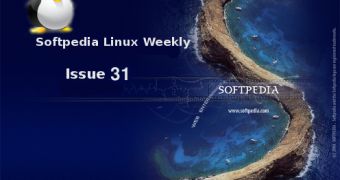
 14 DAY TRIAL //
14 DAY TRIAL // 